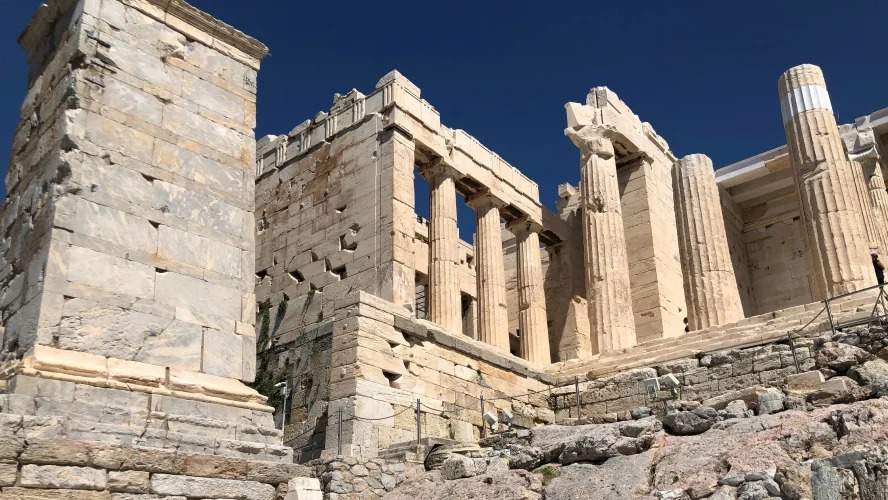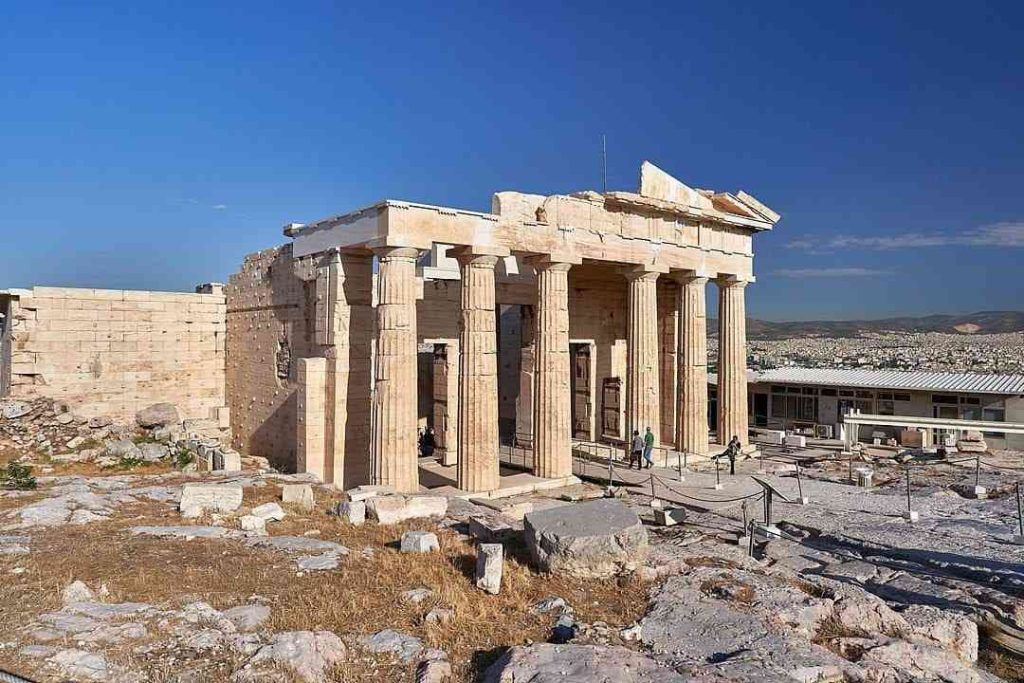Find information about the main attractions in the Acropolis
A monumental entrance way that was built in the fifth century BC, during the height of Athens’ power, and was designed by the architect Mnesicles. The Propylaea of the Acropolis is located at the western entrance to the Acropolis, and it served as the main entrance to the sacred hill. It is regarded as one of the best works of Greek architecture, and it still serves as an inspiration to designers and artists. One of the top tourist destinations in Athens, it has been named a UNESCO World Heritage Site.
The history of the Propylaea can be traced back to the fifth century BC, during the golden age of Athens. The Athenians had just defeated the Persian Empire in the Greco-Persian Wars, and they embarked on a massive building program to celebrate their victory and showcase their cultural achievements. The Propylaea was designed as a grand entranceway to the Acropolis, which was the most sacred site in Athens and the center of its religious and cultural life. The construction of the Propylaea began in 437 BC, under the direction of the architect Mnesicles.
However, the construction was interrupted by the outbreak of the Peloponnesian War in 431 BC, and it was not completed until 410 BC, after a hiatus of more than 20 years. During this time, the Athenians faced a series of setbacks and defeats in the war, which had a significant impact on their political and cultural life. Despite these setbacks, the Propylaea of the Acropolis remained an important symbol of Athenian power and cultural achievement. It served as the main entrance to the Acropolis for centuries, and it was an important part of the religious and cultural ceremonies that took place on the hill.
In the centuries that followed, the Propylaea underwent several modifications and repairs, as it was damaged by earthquakes, wars, and other natural disasters. However, its basic design and layout remained unchanged, and it continued to serve as an iconic symbol of ancient Greek architecture and culture.
Today, the Propylaea of the Acropolis is one of the most popular tourist attractions in Athens, and it continues to inspire architects, artists, and scholars from around the world. It is considered one of the greatest masterpieces of ancient Greek architecture, and it has been designated a UNESCO World Heritage Site.

Propylaea can be considered a stunning example of ancient Greek classical architecture. The central building of the Propylaea is a rectangular structure with a large hall with a marble floor. The hall is surrounded by columns, which support a coffered ceiling made of marble slabs. The columns are Doric in style, with fluted shafts and simple capitals. The walls of the central building are made of limestone blocks, and they are decorated with friezes and sculptures.
The two wings of the Propylaea have different heights and are asymmetrically arranged, in order to compensate for the sloping terrain of the Acropolis. The north wing is wider and lower than the south wing, which is taller and narrower. Both wings have Doric colonnades, which have columns that are made of Pentelic marble. The columns of the colonnades are fluted and have simple capitals, like those of the central building.

The Acropolis ticket grants visitors access to the archaeological site of the Acropolis and its slopes, including the Parthenon, the Theater…
The Parthenon is an iconic symbol of ancient Greek civilization and a masterpiece of classi…
On Athens’ Acropolis, there is a stunning and well-known ancient Greek temple called…
